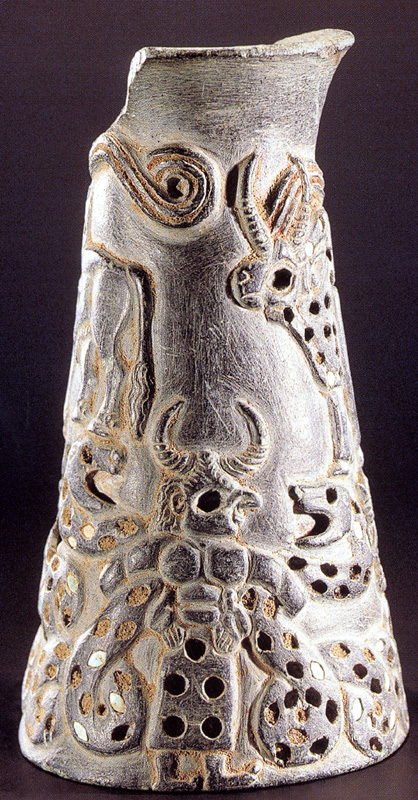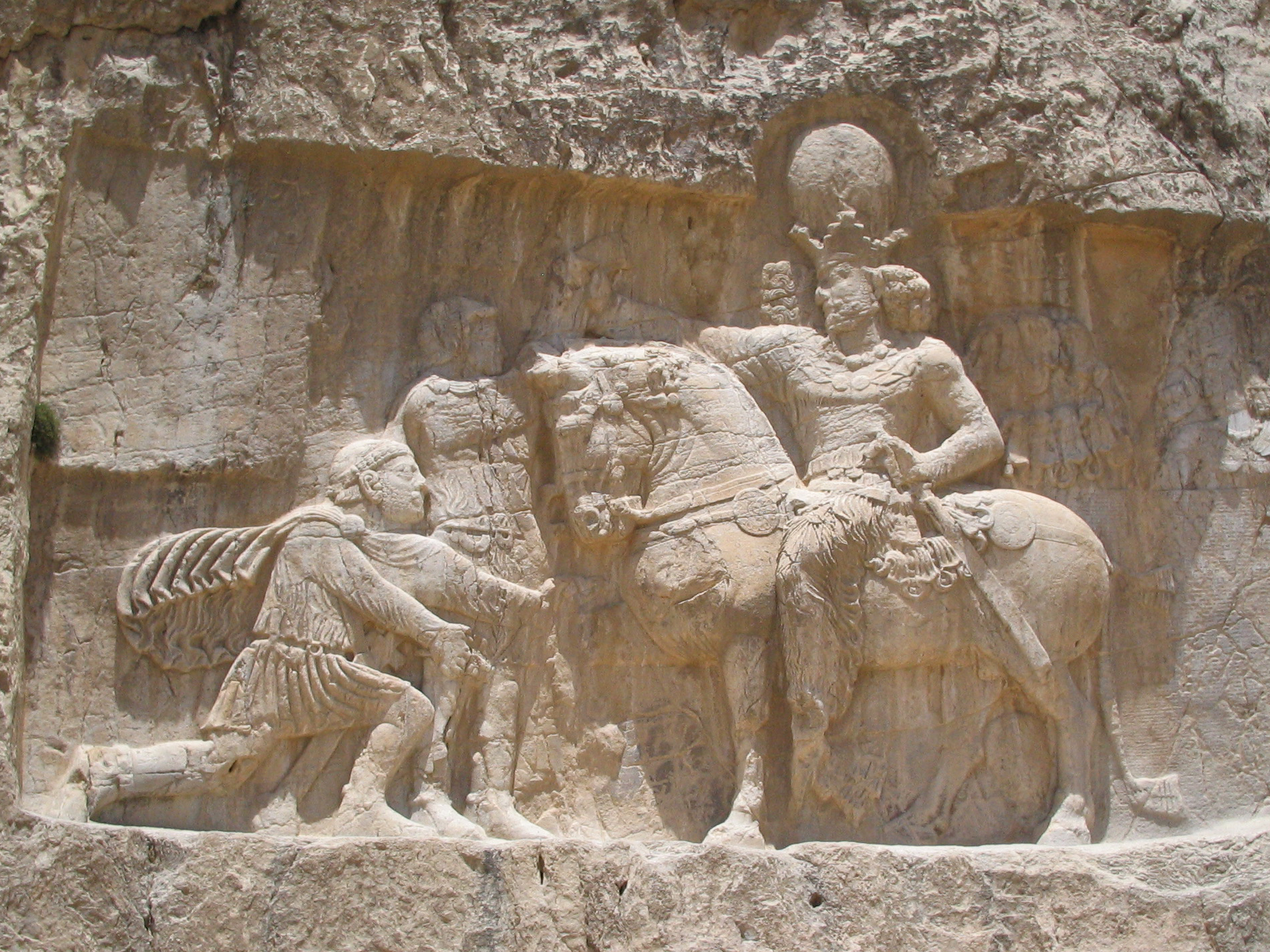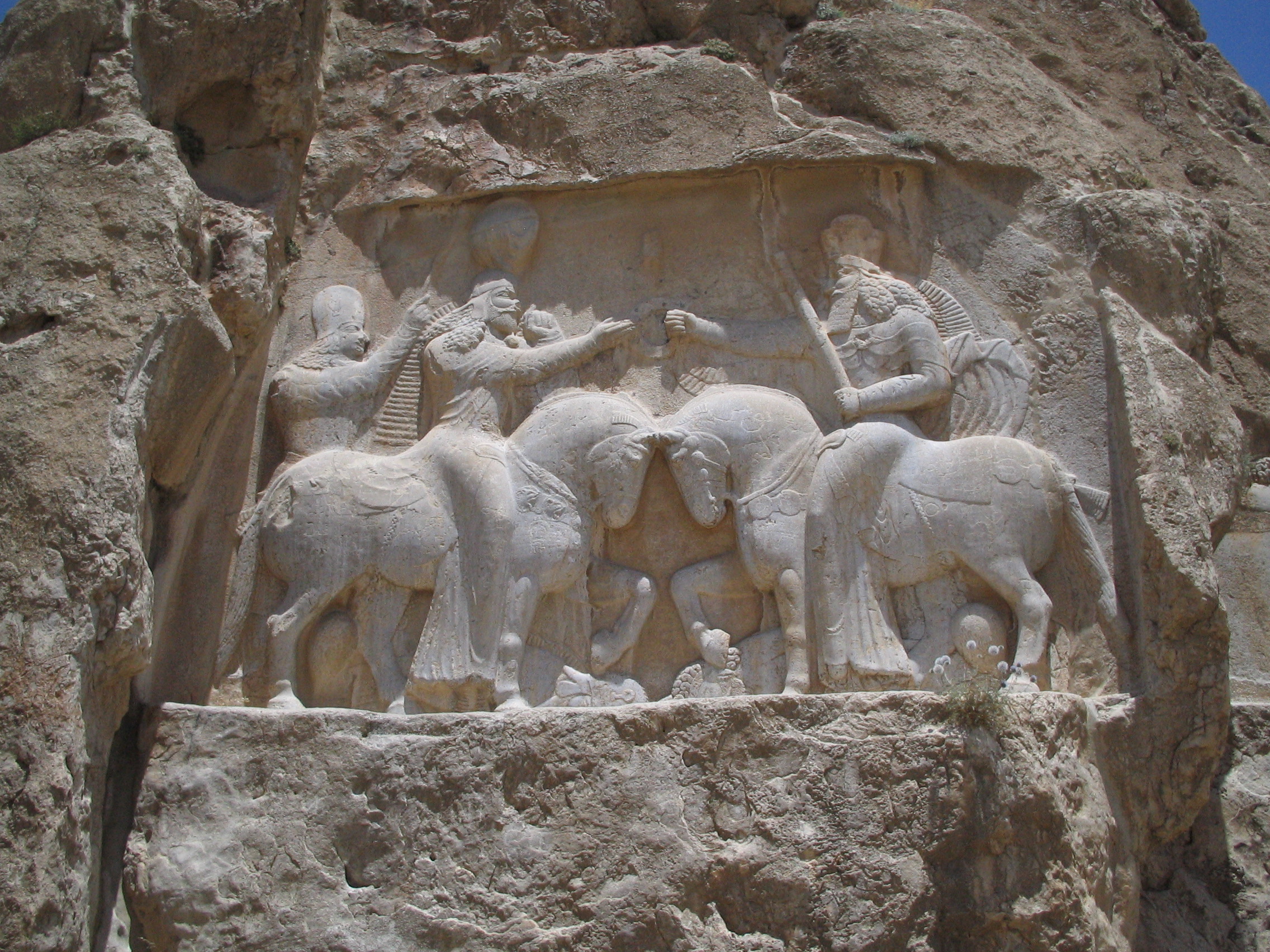Naqsh-e Rostam is an archaeological site located about 12 km northwest of Persepolis, in Fars province, Iran. Naqsh-e Rustam lies a few hundred meters from Naqsh-e Rajab.
The Naqsh-e Rostam rock cut tombs and reliefs were named after the Farsi name for medieval tales of the Persian hero Rostam. History tells of Arab armies bringing Islam to Persia during the seventh century. This was around the same time many pagan temples and monuments were being destroyed.
Archaeologists are still a bit unclear about the history of Naqsh-e Rostam, however what they do know is that the reliefs that surround the rock-cut tombs are a representation of the first and final stages of kingship.
A "two horned" figure wrestling with serpents.
Located on the far left side of the monument is a relief that depicts an Elamite priest. The Elamites were an ancient culture based out of Southwestern Iran in the second millennium BCE. Little is known about their heritage, especially considering there are several fragments of history which are missing.
The second phase of the structure is clearly representative of Sassanian elements. Emperor Shapur I is carved into the cliff capturing Roman emperor Valerian and Philip the Arab, suing for peace.
The growth of the powerful Achaemenid Empire by Cyrus the Great led his successor Darius I to build his palace at Persepolis. Once Darius notice the towering cliff etched with ancient memorials dedicated to kingship, it was only a matter of time that he should add his own legacy. Darius had four burial tombs carved into the sides of the cliff.
The Achaemenid kings held the Prophet Zoroaster in high regard, so later a cubic building was crafted directly in front of the cliffs. The building was linked to Zoroaster, however archaeologists are unsure as to why that is and what the purpose of the structure was.
For centuries, the Persian-speaking Sassanian dynasty expanded upon the site, adding seven more rock-cut reliefs depicting rulers of the dynasty. In most cases, those reliefs depict the rulers receiving their Royal Insignia from Ahura Mazda (the Zoroastrian herald of good).
Ardeshir I
The earliest installation of Ardeshir I also contains the first chronicled use of the word “Iran”. With the overthrow of the Persian Sassanian state by the Arab armies of Islam, understanding of the iconography of Naqsh-e Rostam passed into folklore.
Also check out:
 The Persian Empire was tolerant, as well as efficient. They allowed the peoples to practice their own religions, customs, and methods of living life. There were many years of peace during the Persian Empire which facilitated trade and encouraged the well being of its people. Many eastern people owe gratitude for being subjects of the Great Kings of Persia, including Cyrus the Great, Cambyses, and Darius who governed and expanded the empire.Read More about The Great Kings of Persia
The Persian Empire was tolerant, as well as efficient. They allowed the peoples to practice their own religions, customs, and methods of living life. There were many years of peace during the Persian Empire which facilitated trade and encouraged the well being of its people. Many eastern people owe gratitude for being subjects of the Great Kings of Persia, including Cyrus the Great, Cambyses, and Darius who governed and expanded the empire.Read More about The Great Kings of PersiaPicture Sources
Naqsh-e Rostam
Elam Vase










0 Comments:
Post a Comment
We appreciate comments, but we delete SPAM.